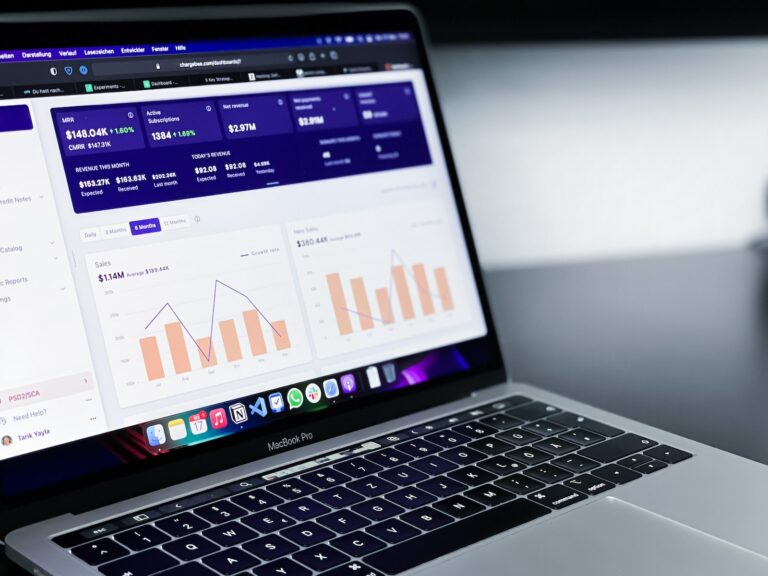How to monitor competitor prices
Are you a business owner or marketer looking for ways to stay ahead of the competition? Do you want to know when your competitors change their prices so that you can adjust yours accordingly? If so, then this blog post is for you. Keep reading to learn how to monitor competitor prices and gain an advantage in the market.
Use a Competitive Intelligence Tool
Using a competitive intelligence tool is one of the most effective ways to monitor competitor prices. With a competitive intelligence tool, you can track pricing data from multiple sources, get alerts when prices change, analyze pricing differences across geographies and territories, and compare prices with other marketplaces or vendors. You can also monitor online reviews, track competitor ads and promotions, and identify price differences between your products and those of your competitors. A competitive intelligence tool can give you an edge over your competitors by providing you with insights into their pricing strategies.
Research Your Target Market
Researching your target market is essential for accurate competitor price monitoring. Knowing who you’re targeting, their preferences, and what they’re willing to pay for a product will help you stay competitive. You should consider the size of your target market, their purchasing power and the type of products they’re looking for. Understanding who your competitors are targeting and what they’re offering can also give you an advantage. Doing research on your target market and competitors can help you determine which products to offer, what prices to set and what promotions will be most effective.
Set Up Price Alerts
Setting up price alerts is a great way to stay informed about your competitors’ prices. Price alerts can be set up for different price thresholds, such as when a competitor’s product goes below a certain price point or when a competitor increases their prices. This will help you stay one step ahead of your competition and ensure that you’re always aware of any changes they make. Setting up price alerts can also help you gauge the market landscape and understand how your competitors are responding to market forces and customer needs. With this information, you can better adjust your own pricing strategy in order to remain competitive. Additionally, by using a competitive intelligence tool, you can set up automated alerts that will notify you each time a competitor changes their prices. This makes it easy to keep track of prices without having to manually check each site on a regular basis.
Establish Your Competitors
Establishing your competitors is an essential step in price monitoring. Identifying who your competitors are and what their offering is, will help you to stay informed on their pricing strategies. Researching each competitor can be time consuming, but it will provide you with the insights needed to create a successful pricing strategy of your own. Look into the type of products they offer and their pricing models. Also check out the locations they are selling in, as it could affect your own pricing strategy. Additionally, take into account their customer service policies, returns, delivery times and any other factor that could influence a customer’s decision to purchase from them or from you. Keeping a close eye on your competition will help you stay ahead of the game and make sure that you are offering customers the best deal.
Monitor Online Reviews
With the right competitive intelligence tool, you can monitor your competitors’ online reviews to see what customers think of their products and services. This data can give you an idea of their pricing strategy, customer service, and overall satisfaction with the products they offer. Additionally, online reviews can provide insight into your competitors’ strengths and weaknesses, which can help you make adjustments to your own pricing and product offerings. By monitoring online reviews, you can stay ahead of the competition and ensure you’re offering the best possible products and services at competitive prices.
Analyze Competitor Websites and Pricing Strategies
Analyzing competitor websites and pricing strategies is a great way to gain insight into your competition. You can compare product offerings, pricing structure, and any discounts or promotions they may be running. This will give you an idea of how they are competing in the market, and if there are any areas where you could improve your own offerings. Additionally, you can get an idea of how they are pricing products and services in order to compete in the market. By understanding the different pricing strategies used by competitors, you can better position yourself in the market and create a competitive advantage. You can also use this information to identify any potential weaknesses that you may have and work to improve them.
Track Competitor Ads and Promotions
When it comes to monitoring competitor prices, tracking competitor ads and promotions is another key factor. Keeping track of competitor ads and promotions allows you to see which products they’re promoting and the prices they’re charging for them. This can be beneficial in helping you stay ahead of the competition. By regularly checking the ads and promotions of your competitors, you can gain insight into their strategies and adjust your own plans accordingly. Additionally, you can also use this information to identify potential price gaps between your products and those of your competitors, as well as new opportunities for your own business.
Identify Price Differences Across Geographies and Territories
Price differences across geographies and territories are one of the most important aspects of competitor price monitoring. Prices can vary significantly depending on the region or country, so it’s important to track these differences to ensure you are aware of trends and changes. By tracking pricing differences, you can gain insights into competitors’ strategies and be better prepared to respond to them. Price monitoring software can help you quickly identify price differences across geographies, allowing you to stay ahead of the competition and maintain a competitive edge.
Compare Prices with Other Marketplaces or Vendors
Comparing prices with other marketplaces or vendors is essential to ensure that you are offering competitive prices. You can conduct research into your competitors’ prices and compare them with other online vendors and marketplaces. This can help you identify any discrepancies in pricing strategies across different markets. It is important to include not just the headline prices, but also any additional costs associated with shipping, returns, and quality. This will help you develop an accurate understanding of the price differences between your competitors and other vendors. Additionally, you can use this data to identify any opportunities to gain a competitive advantage in terms of pricing.
Consider Quality, Shipping, Returns and Other Factors
When monitoring your competitors’ prices, it’s important to consider more than just price. Quality, shipping, returns, and other factors can all influence a customer’s decision to purchase a product. Consider researching your competitors’ policies in these areas and assessing how they compare to your own. Do they have a better return policy? Do they offer free shipping? Do they provide superior quality? These are all things that can sway customers away from your products and toward those of your competitors. Keeping tabs on these factors can help you make sure that your products remain competitive in the market.
Conclusion
Monitoring your competitors’ prices is essential for understanding the competitive landscape and staying ahead of the game. It can help you identify pricing opportunities and potential threats, adjust your pricing strategies, and ensure you remain competitive. By using competitive intelligence tools, researching your target market, setting up price alerts, establishing your competitors, monitoring online reviews, analyzing competitor websites and pricing strategies, tracking competitor ads and promotions, identifying price differences across geographies and territories, comparing prices with other marketplaces or vendors, and taking into account quality, shipping, returns and other factors, you can make sure you remain competitive in the market.







